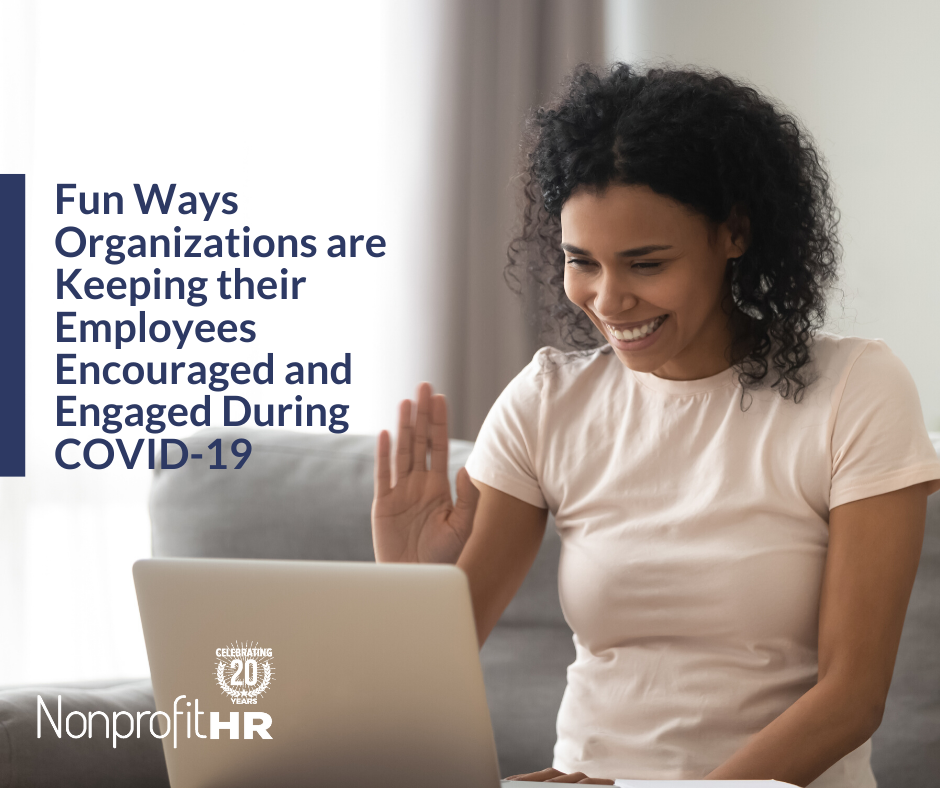WTOP: 5 ways nonprofits can…
Written by Patty Hampton, Vice President & Managing Partner
Nonprofit HR
The saying, “age ain’t nothing but a number,” is true particularly when it comes to the challenges that Gen Xers and Baby Boomers face in what continues to be a candidate-driven market. Pew Research Center confirms that 85% of Gen Xers and 67% of Baby Boomers continue to keep pace with Millennials on the use of technology. Smartphones and social media continue to be popular with all generations, but when it comes to tablets, Gen Xers have edged out Millennials in terms of adoption. With technology being accessible 24/7, recruiting for top-talent with in-demand skills will continue to evolve. What is even more intriguing; however, is that Gen Xers and Baby Boomers will continue to experience age discrimination by recruiters and/or hiring managers.
For more than 50 years, the Age Discrimination in Employment Act of 1967 (ADEA) has established protections for applicants and employees who are 40 years of age or older from employment discrimination based on age. Sadly, age discrimination continues to be imbedded in some recruitment practices. In fact, an AARP survey findings show that three in five older workers believe age discriminations exists in the workplace, based on what they have seen or experienced personally.
While some employers have evolved by adopting policies and practices that support the development of a diverse workplace, others continue to fall short of what it truly means to have an inclusive workplace culture and environment with age as a factor among other demographic categories. But, let me be clear, it’s not about getting past the recruiter or hiring manager. It’s more about uncovering the values and beliefs that are supported by an organization’s leadership. When it comes to discrimination, organizational leaders must care and be aware of what is happening inside their organization.
Leaders proactively shape organizational culture and offer a vision that must be carried forward by others within the organization. This includes communicating their expectations about and providing the training necessary to ensure non-discriminatory hiring practices. Only then will sound efforts to create an inclusive workplace will be reflected internally and externally.
Here are a few more tips to help you highlight the talent and value you offer:
- Engage heavily on social channels if you are actively looking for a new opportunity. This requires you to keep your LinkedIn profile updated and expand your overall social media footprint on Twitter and Instagram (IG).
- Depending on your professional passion and commitment, write a blog or white paper and publish it online through your organization’s e-newsletter or website. The more you can demonstrate yourself as the go-to person on a subject, recruiters will be blowing up your email or phone to have a conversation with you.
- Be open to taking on speaking engagements including webinars, podcasts, live stream opportunities, and other events. Be open to showcasing your talent and expertise. Trust me, it’s okay to shine a light on yourself and not come across as arrogant in the process. You can learn more on how to do this by reading up on personal branding.
- Be digitally cultured and literate. By this, I mean surround yourself with people that understand how to balance both old school and this artificial intelligence wave, and the digital transformational age that we are all experiencing. Self educate and be well-read on how the workplace is shifting and what makes your soft skills unique.
I’d love to hear successful tips you’ve implemented in your search for new career opportunities! Email me about your experiences or other successful stories you’ve heard.
by Patty Hampton
Vice President & Managing Partner
Nonprofit HR






























